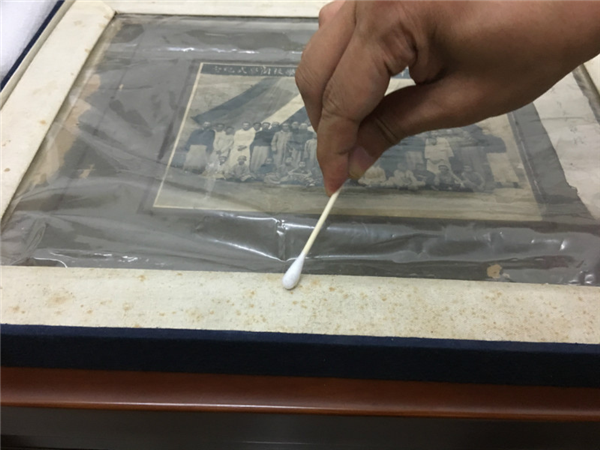Education
Preserving ancient calligraphy and paintings with essential oils
Time is the greatest enemy of preserving cultural relics. The increasing number of visitors changes the humidity and temperature of storage conditions, and striking a balance between attracting visitors and preserving collections has become a difficult dilemma for every protector of cultural relics.
"Locking cultural relics in an iron cabinet is not a smart idea," Chen Zhuo, curator of the Tianjin Museum said.
Chen recently signed an agreement with the Tianjin University School of Life Sciences in the hope that some irreplaceable relics can be better preserved with modern science and technology.
Huang Jinhai, a professor at the School of Life Sciences at Tianjin University, has been working on an interesting project that may help. His students are extracting essential oils from various flowers. These oils are not used in aromatherapy, but to protect cultural relics.
 |
| Researchers conduct sampling. |
By chance, Professor Huang Jinhai discovered that essential oils from lilac can inhibit fungi on paper and wooden products which have been stored for a long time. Fungus is the main cause of mildew stains on ancient Chinese calligraphy, paintings and wooden cultural relics.
"My students have found six different categories of fungi from specimens collected from items in the Tianjin Museum," Huang explained. "Now, we are analyzing essential oils to see which genus of lilac works best with which type of fungi, how much we should apply to produce the optimal effect, and how long it can last. For the moment we are dropping essential oils on paper and putting it together with the cultural relics. The volatilization of essential oils can preserve cultural relics without causing any damage,"
As one of the famous artworks of Fan Kuan, a painter of the Northern Song Dynasty, "Snow-Covered Scene and Cold Forest"(《雪景寒林图》), an ink painting on silk, is now preserved at the Tianjin Museum.
The Tianjin museum is the first state-owned and privately-operated museum in China. Tianjin only has a history of 600 years so there are not many cultural relics unearthed locally. However, relics collected in the Tianjin Museum are excellent in quality due to the donations of private collectors.
"These cultural relics, especially calligraphy and paintings on paper and silk, were created long ago, have been possessed by many collectors and preserved in different conditions, so they are more difficult to restore and preserve," Chen Zhuo noted.
But Chen is pleased to see that Fan Kuan’s works of art can be preserved for a longer time with the protection and restoration technology of essential oils from Professor Huang’s team.
The observation center of Tianjin’s movable heritages is located in the Tianjin Museum, making it the headquarters of cultural relic observation in the city.
"We can monitor the temperature and humidity, and notice if there are any harmful gases in the cabinet every day. If the environmental factors go against the preservation of cultural relics, we will notify the relevant departments to handle it immediately," Chen said, adding that he also hoped that scientists at Tianjin University could offer more ideas and technologies to preserve the relics.

Copyright 1995 - . All rights reserved. The content (including but not limited to text, photo, multimedia information, etc) published in this site belongs to China Daily Information Co (CDIC). Without written authorization from CDIC, such content shall not be republished or used in any form. Note: Browsers with 1024*768 or higher resolution are suggested for this site.
Registration Number: 130349









